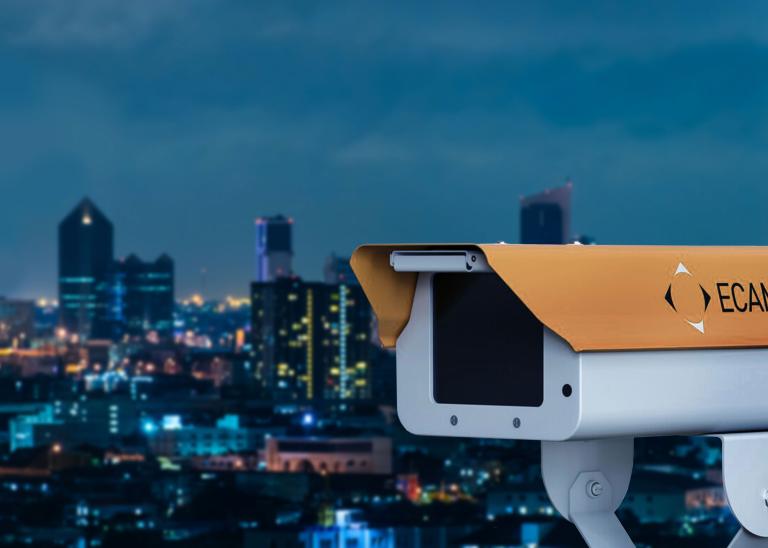Preparing Your Business for Times of Civil Unrest: Proactive Strategies to Protect What Matters Most
By ECAMSECURE 09/10/2024

Periods of civil unrest are often marked by unpredictability and heightened tensions, posing significant risks to businesses, employees, and communities. Events such as election cycles, social justice protests, economic instability, or contentious legislation are common triggers for demonstrations and unrest. The summer of 2020, for example, saw widespread protests and civil unrest in major cities, causing significant disruptions for businesses across the country. From broken windows at local retailers to entire city blocks shutting down to prevent looting, companies faced unprecedented challenges trying to protect both people and property.
The lesson from these events is clear: civil unrest preparedness is crucial for organizations located in potential hotspots. Whether you’re a retail store in a busy downtown area or a corporate office near high-risk zones, having a security plan for unrest situations can be the difference between navigating a turbulent period successfully or experiencing significant losses.
Here are some practical steps and civil unrest security best practices that can help safeguard your business and personnel during these uncertain times.
1. Assess Your Risks Before Trouble Begins
Evaluate Physical Vulnerabilities
Conduct a thorough evaluation of your facility to pinpoint weak points that could be exploited during civil unrest. Identify areas with large windows, public-facing entrances, or storage locations for high-value goods.
Plan for Worst-Case Scenarios
Base your planning on previous incidents and the current social climate. Consider how civil unrest security risks might impact supply chains and your ability to secure premises, and employees’ safety. The goal is to map out realistic worst-case scenarios and prepare accordingly.
Coordinate with Suppliers and Partners
Reach out to your critical suppliers and partners to discuss potential disruptions, transportation issues, and alternative routes. Being proactive can help mitigate business continuity challenges during periods of unrest.
2. Strengthen Your Physical Security Measures
Install Reinforced Barriers
Physical barriers like roll-down shutters or temporary fortifications can protect vulnerable areas such as windows and entryways, reducing the likelihood of break-ins or property damage.
Increase Security Personnel Presence
Trained security personnel act as both a deterrent and a first line of response. Consider increasing the number of security officers on-site during high-risk periods or employing remote monitoring solutions if on-site guards are not feasible.
Implement Smart Surveillance Solutions
Surveillance cameras are a must, but they should be integrated with advanced analytics. Artificial Intelligence-powered software can identify suspicious activities, like loitering or large gatherings, and automatically alert security teams to intervene before situations escalate. Implementing security technology for civil unrest can greatly enhance your facility’s protection.
3. Leverage Technology for Early Detection and Response
Remote Video Monitoring
Advanced surveillance systems with remote video monitoring capabilities allow security teams to keep an eye on your property 24/7. Cameras equipped with motion detection, loitering alerts, and facial recognition can provide real-time insights without putting personnel in harm’s way.
Drones and Aerial Surveillance
Deploying drones for aerial surveillance can be a game-changer for monitoring large properties or campuses. Drones offer a comprehensive view of crowd movements and can detect threats that ground-based cameras might miss.
Monitor Social Media for Threat Indicators
Many protests and potential disruptions are organized or announced on social media platforms. Tools like geofencing can help pinpoint where these activities are likely to occur, giving you a head start on preparing your security measures. Leveraging technology to monitor social sentiment can provide invaluable early warning signals.
4. Prioritize Employee Safety and Communication
Offer Remote Work Options
If unrest is expected to impact commutes or the safety of your employees, consider shifting to remote work or flexible hours until the situation stabilizes.
Establish Clear Communication Channels
Set up an emergency notification system that can quickly disseminate alerts to all employees via SMS, email, or phone calls. During times of unrest, it’s crucial to keep everyone informed and aligned, ensuring employee safety during volatile periods.
Create a Crisis Response Plan
Outline clear procedures for evacuating, sheltering in place, or securing the building in the event of an emergency. Regularly train employees on these procedures and confirm they know how to access real-time updates. A strong crisis management plan for civil unrest can make all the difference in an emergency.
5. Maintain a Post-Unrest Recovery Plan
Once the situation has calmed down, it’s time to assess damages, support employees, and rebuild community ties. Take these steps to help warrant a smooth recovery:
Assess and Document Damage
Conduct a thorough inspection of your facilities as soon as it’s safe to do so. Document all damages and file insurance claims promptly.
Support Employees’ Mental Health
Events like these can be traumatic. Offer counseling services and mental health resources to help employees process their experiences.
Strengthen Your Community Presence
Consider engaging in community rebuilding initiatives or partnering with local organizations to support affected areas. These actions not only repair physical damage but also build goodwill and strengthen community ties.
Final Thoughts
Civil unrest preparedness doesn’t have to be a time of uncertainty and fear for your business. By proactively assessing risks, enhancing security, leveraging technology, and supporting employees, you can navigate these turbulent times more effectively. While we can’t predict every outcome, having a comprehensive preparedness plan in place means you’ll be better equipped to respond quickly and minimize the impact on your operations.
Contact a Surveillance Expert today. Don’t wait until tensions are at a boiling point. Start preparing now by assessing your vulnerabilities, enhancing your security protocols, and implementing proactive security measures to build resilience against future unrest. Taking these steps today will help ensure your organization is prepared to weather any storm and protect what matters most during times of civil unrest.


